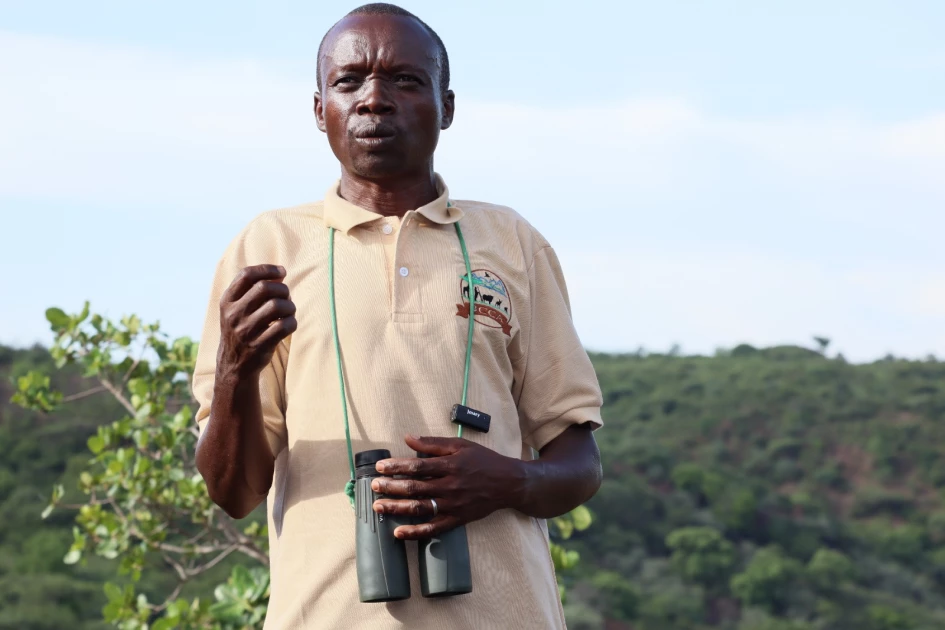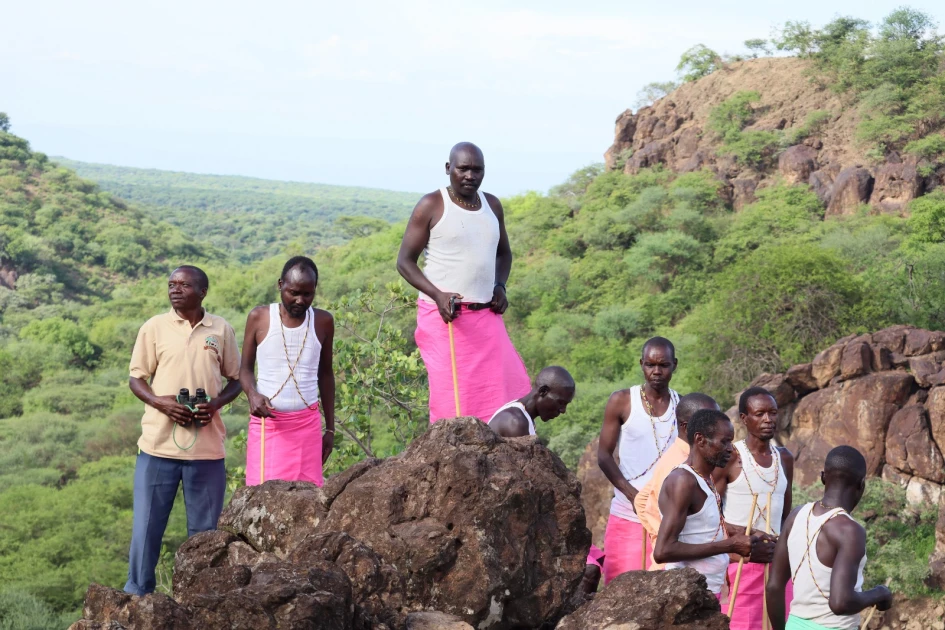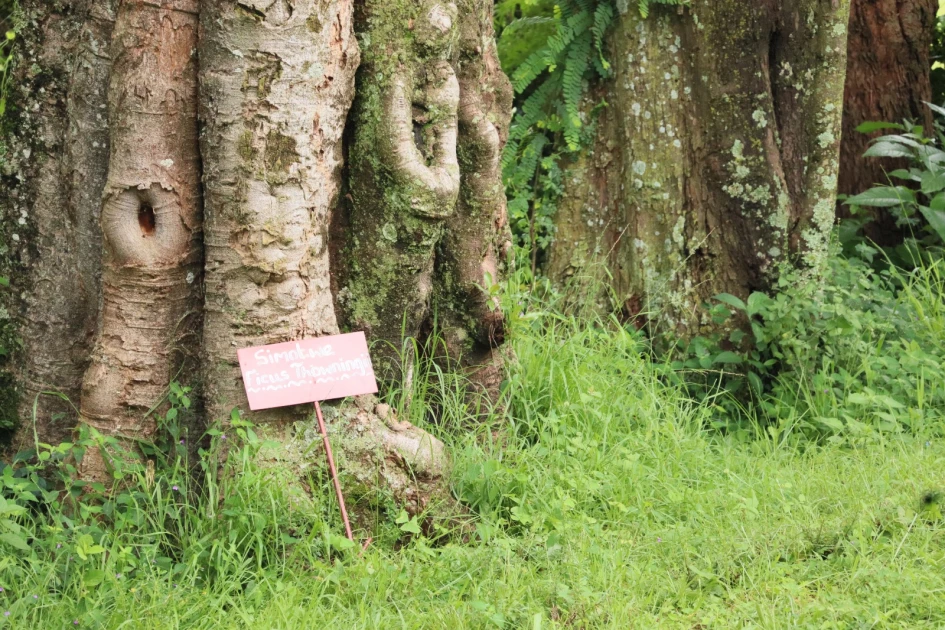Kenya's indigenous communities in the shadows at the ongoing biological conference in Colombia

Susan Jepkemoi, Baringo County Conservancies Association (BCCA) Chief Executive Officer.

Audio By Vocalize
Baringo County is one of Kenya’s largest counties, covering 11,075 square kilometres but with a relatively small population compared to other Kenyan counties. The county is densely populated, with a large area being virgin land, making it a historical biodiversity hotspot.
The Elchamus, Endorois, and Ogiek have been the indigenous peoples of Baringo for centuries.
I set out to Kapkun Village, Marigat Division, in the interior of Baringo South, where the Endorois community resides.
Mr. Jonathan Koech is the chairman of the Mangar Community Conservancy, established in 2019. The 150-member conservancy resulted from awareness training at a workshop in Nairobi.
Mangar Conservancy focuses on the conservation and protection of rare biological species, including Patas monkeys and klipspringers, with a long-term agenda to attract both local and international tourists for research and recreation.
Mr. Koech is counted among those who shine a light on the community. He understands and speaks good English and Swahili, always bridging the conversation between guests and locals, who primarily speak their native language.
Our engagement reveals a historical geographical site with unique water springs that exist within the conservancy.
“This geographical site attracted UNESCO representatives when we became a conservancy. They left us to finalize some documentation for this site to be recognized as a World Heritage Site; unfortunately, due to a lack of resources, we have not been able to complete the documentation,” says Koech.

Mr. Jonathan Koech is the chairman of the Mangar Community Conservancy.
Curious about the community's expectations from Cali, Colombia, given that the indigenous communities' agenda has been prioritized for discussion at the global biodiversity summit, I asked.
“Thank you very much for letting us know. Thank you for bringing us this good news. We have never heard about that. Thank you very much; you have done well. Thank you, my sister,” he responds, elated.
The Biodiversity COP is held every two years, meaning the global summit has existed for over three decades. The 50-year-old Koech has never heard of it.
Who, then, from Kenya are the indigenous people at the global arena advocating for the rights of the communities? Koech did not travel but should have been informed, even through a phone call, by anyone who acknowledges the community's sacrifices to conserve biological species.
Susan Jepkemoi is the Chief Executive Officer of the Baringo County Conservancies Association (BCCA). She heads 16 conservancies in the county. “What are you doing in the office while you are the boss? You should be in Cali,” I asked jokingly.
“BCCA is a very young organization. Our financial capacity did not allow me to allocate resources for COP 16 participation; it is a very expensive affair. I was banking on some NGOs to lend a hand, but unfortunately, it didn’t work out,” she replies.
Susan explains that the conservancies association was established when pastoralists donated pieces of land to increase animal feed after noticing a decline in livestock yields.
The association also plays a watchdog role to keep away individuals who present themselves as researchers with hidden agendas to exploit biological resources from unsuspecting community members.
According to Jepkemoi, a case in point is a foreigner who posed as a researcher at Lake Bogoria but ended up taking away community industrial microbes generated along the boiling lake. This was discovered long after he had profited from them. Although the community was compensated, it was considered unfair.
“We have also had trespassers in our natural forests. As you may know, indigenous trees have medicinal value and are of interest to researchers in the medical field,” she adds.
Jepkemoi understands the burden on her shoulders in spearheading local sensitization on biodiversity discussions at the international level; however, she states that financial limitations undermine the entire plan every time she thinks of it, and she cannot do it alone.

The Endorois community of Baringo
The biodiversity enthusiast states that getting an opportunity to openly defend the locals for a good cause can be viewed as a threat by people nicknamed "conference professionals" who attend these meetings year in and year out but do not engage with the community or provide feedback. Therefore, she chooses silence.
She alleges knowledge of NGO consortiums that flood international meetings; some are imposters who claim to represent local communities.
“They use community representation as a cash cow; they easily get away with it. Their daily prayers are that our indigenous people remain asleep as long as they continue to profit in the name of representation.
It is what it is; when they need community representation, they handpick individuals from the community who they know will be excited to travel but who do not understand what is going on in those meetings, covering up any possible loopholes for interrogation.”
Citizen Digital's investigation findings reveal concerns about why COP feels like a distant dream to the Baringo locals and indigenous people.
The involvement of Indigenous Peoples and Local Communities (IPLCs) in biodiversity conservation is a cornerstone of the Convention on Biological Diversity (CBD). Their traditional knowledge, practices, and deep connection to the land make them invaluable allies in the global effort to protect ecosystems.
According to Krystyna Swiderska, principal researcher and team leader (biocultural heritage) at the International Institute for Environment and Development (IIED)'s Natural Resources research group, the Global Biodiversity Framework and its 2030 targets are to be implemented through National Biodiversity Strategies and Action Plans, with Indigenous Peoples (IPs) and Local Communities (LCs) meant to participate in their development and implementation as partners and experts.
A global assessment in 2019 found that biodiversity is best conserved on Indigenous Peoples' lands, emphasizing the importance of ensuring that IPs and LCs and their traditional knowledge are given equal consideration in negotiations.

IIFB has proposed the establishment of a permanent body on Traditional Knowledge (TK) at the Convention on Biological Diversity (CBD) to ensure that IP and LC rights, needs, and TK are better addressed across the CBD and Global Biodiversity Framework (GBF). Krystyna maintains that this approval is critical at COP 16 to ensure the GBF targets are met.
According to the researcher, of the overall finance for biodiversity and climate change, very little reaches IPs and LCs on the ground (about 1%); most goes to NGOs and intermediaries. However, the new fund for the GBF has set a target of allocating 10% of its funding to IPs and LCs.
A new programme of work on traditional knowledge has been agreed upon in Cali, Colombia. One concern is that some parties are calling for the removal of references to human rights in some COP decisions, such as the decision on Biodiversity and Climate Change.
The draft decision focuses on nature-based solutions and ecosystem-based approaches, including biodiversity credits and carbon credits, as ways to increase private finance for biodiversity.
However, it has emerged that some (not all) IPs and LCs oppose biocredits and carbon credits because they contradict their spiritual and cultural relationships with biodiversity and could lead to land grabs. Instead, they are calling for recognition and protection of their rights to customary lands and territories, which make up 37% of the world’s natural lands.
COP 16 in Cali, Colombia, is soon coming to a close, and biodiversity delegates will quickly begin planning for another gathering in 2027.
The Endorois community may be just a fraction of the global indigenous and local communities unaware of important plans regarding the sacrifices they make.
As to whether they will find closure from the decisions made at global summits, that remains at the mercy of those in power.


Leave a Comment